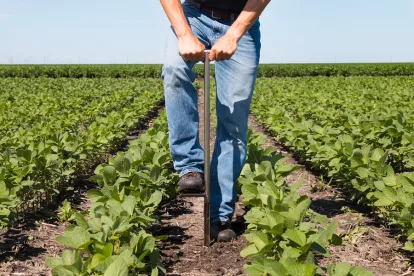Running a family-owned farm is not easy work under the best of economic circumstances, and it can be nearly impossible when times are tough. More than 30 years ago, during the mid-1980s, John Cougar Mellencamp’s mournful song “Rain on the Scarecrow” discussed the epidemic of family farm foreclosures hitting the American Heartland. Thankfully, the overall family farm economy is not at that crisis level today, but storm clouds are rumbling.
While the underlying economic issues leading to family farm bankruptcies are complex, Congress recently passed new legislation that gives family farmers greater protection in bankruptcy proceedings. The Family Farmer Relief Act of 2019 expands the debt limit for farmers seeking to file Chapter 12 bankruptcy from $4.3 million to $10 million.
This relief comes at a difficult time for family farmers. A variety of factors, ranging from extreme weather events to crop overproduction to the ongoing trade dispute between the US and China, has led to economic hardship for many family farms. Damage caused by Hurricane Dorian may lead to additional crop failures in the Southeastern US. Farming net income has been on the decline since 2013. The American Farm Bureau Federation notes that the number of farms filing for Chapter 12 protection is up 13 percent during the past year, while the farm loan delinquency rate is at a six-year high. Perhaps most ominously, the level of US farm debt has risen over $400 billion—a level not seen since the aforementioned farm debt crisis of the 1980s and a 30 percent increase since 2013.
Chapter 12 was first added to Bankruptcy Code in 1986. Judge Thomas Small, then US Bankruptcy Judge for the Eastern District of North Carolina, was one of the primary architects of the Chapter 12 legislation. But the size of the average farm has increased substantially since then, and many farms were being forced into the more expensive and cumbersome Chapter 11 process. With this update, lawmakers sought to update Chapter 12 to reflect the current economic challenges facing distressed farmers.
“The double-whammy of nominal record farm debt and poor economic conditions have led many farmers to seek Chapter 12 bankruptcy as a debt relief and restructuring option,” said Zippy Duvall, President of the American Farm Bureau Federation. “Lifting the liability cap and giving more farmers an opportunity to qualify for Chapter 12 bankruptcy provides the restructuring and seasonal repayment flexibility that many farmers need in today’s lagging farm economy and will help to align bankruptcy law with the scale and credit needs of US agriculture.”
The following bankruptcy reorganization options are available to farms, depending on their individual circumstances:
-
Chapter 12: Chapter 12 bankruptcy was enacted in the mid-1980s specifically to address farm debt. The statutory language limits Chapter 12 protections to family farms and fishermen with “regular annual income”. These may be structured as corporations or partnerships, however.
Chapter 12 also provides several key advantages for family farms compared to other bankruptcy options. For example, Chapter 12 allows farms to make payments seasonally, to better match the natural ebbs and flows of farm income. Also, Chapter 12 gives debtors a longer window to begin making payments, and filing only costs $275.
Another key advantage of Chapter 12 is that debtors may sell any farmland or farming equipment that is free and clear of liens. Creditors do not have as much statutory ability to challenge such sales, compared to Chapter 11 proceedings.
Finally, Chapter 12 allows debtors to pay secured creditors based on the current value of collateral in their home, rather than how much they owe on the mortgage (often called a “cram down”). Chapters 11 and 13 do not allow debtors to “cram down” the mortgage on their primary residence. This provision was put into place for Chapter 12 because family farmers often live on the land they also farm.
-
Chapter 11: The Chapter 11filing fee is more than $1,700, significantly more than $275 for Chapter 12. Chapter 11 filings typically are for larger, more complex organizations, and as such, this may not be the best option for many family farms. However, it could be in play for farms with debt that exceeds the new $10 million Chapter 12 limit.
-
Chapter 13: This option is available to individuals, not corporations or partnerships, with relatively small amounts of debt—approximately $419,000 in unsecured debt and $1,258,000 in secured debt.
The Family Farmer Relief Act passed both houses of Congress with bipartisan support and was passed into law in August 2019. It is one of several significant new pieces of legislation impacting bankruptcy law in 2019, along with The National Guard and Reservists Debt Relief Extension Act of 2019, The Honoring American Veterans in Extreme Need (HAVEN) Act of 2019, and The Small Business Reorganization Act.



 />i
/>i

